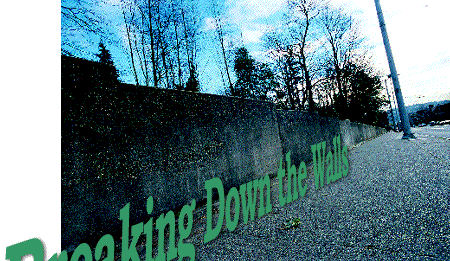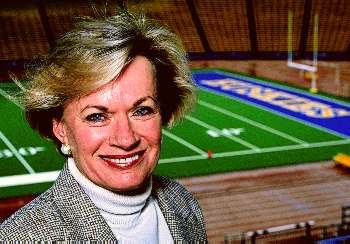

 | |
 |
Once Bitter Feelings Between Town and Gown Have become Downright Neighborly—Just in Time as Megaprojects Take Aim at the 'U' District. |
By Jon Marmor
|
That sound you hear rumbling through the University of Washington and the Seattle neighborhoods that surround the campus? Could it be the collective grinding of teeth by the 50,000 people who live within a mile of the UW, and the 50,000 or so UW employees, faculty and students who populate the campus? The reason? The region is going to be hit with three of the messiest, biggest-impact projects ever—and all at about the same time. Brace yourself:
In other words, life in and around the UW could be a total headache. For years. Consider: six years of construction (beginning in late 2000) on a subway line on the campus side of 15th Avenue N.E.; 71,000 Seahawk fans jamming into Husky Stadium on Sundays in the next two autumns; and a cornucopia of construction projects—ranging from the new William H. Gates Hall for the law school to possibly putting a lid over Pacific Avenue N.E.—to accommodate 10,000 more people on campus in the next decade.
"It's pretty overwhelming," says Louise Little, '81, president of the Greater University District Chamber of Commerce and personnel director at the University Book Store.
Yet, despite the coming disruption, there is a strange feeling permeating these parts. For the first time in recent memory, the UW and the surrounding neighborhoods have been acting, well, neighborly toward each other. Years of rancor, mistrust and suspicion seem to be subsiding.
And just in time, too. Oh, things are not perfect. There are still lots of ongoing squabbles. "But the situation is much better than it used to be," says Steve Sheppard, '71, supervisor of the Neighborhood Programs Division for the city of Seattle, who for years has been involved in dealings between the University and surrounding resident groups. Perhaps the best example of how relations between the University and community have changed was the stunning resolution of a potentially nasty situation—the siting of a new UW indoor athletic practice facility. It looked like yet another big University-community battle. The $26 million facility will be about 80 feet high and 150 yards long, holding about 95,000 square feet. The original site was north of the IMA Building parallel to Montlake Boulevard. But fearing it would create a "canyon effect" down the busy thoroughfare (because of the hill on the other side of the street), residents declared it unacceptable. Just as tempers were beginning to flare, Barbara Hedges, the UW athletic director, turned out to attend several community meetings to see how the situation could be worked out. Her mere presence at those meetings blew many people away. 
|